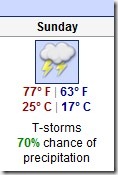Friday, January 09, 2009
Re-thinking Hawaii’s utilities means thinking smaller
by Larry Geller
When we talk about ramping up alternative energy sources, we’re usually talking about thinking smaller. Wave and wind power generators, photovoltaic farms, even home systems start and usually remain small. At some point, though, they should begin replacing some of the belching dinosaur fossil fuel plants, right?
So the future should include downsizing for our biggest utilities, unless they can recreate themselves to fit the new paradigm.
And of course, we need a power grid where smaller generation units can plug in and drop out at whim. Maybe, when you go to fire up the hot tub, you won’t be able to sell electricity back to the grid from your rooftop farm for a few minutes. It has to be ok with the grid for you to do that. If there is a large-scale power outage, maybe your home system might still supply power for your neighbors.
I was reminded of “think small” by Ian Lind’s discovery of a Maui News article, County wastewater chief: Small plants may be better. The article is dated 12/28/2008. Ian referenced it on his blog this morning.
For decades, the county has contemplated addressing several wastewater issues by building a big, centralized treatment plant inland. The cost of nearly half a billion dollars has always kept the idea on the shelf.
But now, thanks to technological innovations and the gradual creation of a private wastewater service business, there may be a third way: Dave Taylor, the head of the Wastewater Reclamation Division in the Department of Environmental Management, says the third way - small, private "package" plants - is not only feasible but in many ways desirable.
Apparently, big treatment plants stink but the little ones don’t:
Few or no odor problems. Controlling odor is mainly a matter of age, says Taylor. The older it is, the more it smells. Central plants with long collection lines age the sewage. Local plants with short lines get the incoming sewage treated before it has a chance to stink.
Big plants dump the treated sewage into the ocean, local plants can re-use it for anything but drinking. A golf course could be watered, or your lawn.
Who would have thought of local sewage treatment?
Back to power. Local generation of power is not a new idea. Before leaving New York City in 1972 we lived at Amalgamated Warbasse Houses in Brooklyn. It was built in 1964 and we moved in three years later, so it was still quite new. And it had a new idea for its time—it had installed its own power plant to make electricity, hot water, and air conditioning. And it worked really well. The plant is still there. See the upper left corner of the picture, near the subway tracks. That’s the Warbasse cogeneration facility.
It not only saved money when it was built, but after recent upgrades from a steam boiler/turbine-based plant to a gas-turbine-based combined cycle plant, it realized additional savings. The original plant was completely off the grid, but the new plant is interconnected and sells electricity back to the utility. In case of an outage or emergency, they can tap power from the grid and keep running.
I’ve not kept in touch with what’s happening at Warbasse since leaving there, but it was good to see that the power plant is still on the Google map. I did hear that during New York’s power blackouts years ago that the lights remained on at Warbasse. What a great idea the original designers had.
Imagine Hawaii interconnected with an intelligent digital electronic grid that knew where power failures were happening even before you pick up the phone to call HECO. Imagine that outages remained localized as much as possible. Imagine that the grid could try to re-route power to eliminate the outage.
Imagine that seeing this graphic on the Weather Underground web page forecast for Sunday wouldn’t raise concerns—whether you need to unplug the computers at the office before leaving today, so they won’t get fried should there be another outage, or whether you need to buy more flashlight batteries.
It doesn’t require lightning, though, to have a power failure. I was sitting at the computer yesterday when the UPS units beeped once. It was a fast hit or dropout, who knows why. The sky was clear, it wasn’t even raining. Probably it was a surge because the clocks are still running.
I don’t recall any glitches when we lived at Warbasse, though that was a long time ago. Making your own power has many advantages. Before someone jumps on me about the lack of computers in those days, we were hooked up from 1967, modem and all. It was the unreliable phone system we were concerned about then, not electricity. We had homemade power that simply flowed and flowed.




Post a Comment
Requiring those Captcha codes at least temporarily, in the hopes that it quells the flood of comment spam I've been receiving.